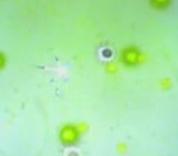Spore Gameplay Video (Will Wright)
William R. Wright (born January 20, 1960) is an American computer game designer and co-founder of the video game developer, Maxis. He is best known as the original designer of the two groundbreaking computer games SimCity and The Sims.
Will Wright talking at the Game Developer's Conference about 'Spore', which looks like it could possibly be the best video game ever.
Spore will be a simulation that "ranges from the cellular level to the galactic level". It features several stages that are reminiscent of some of Wright's favorite games:
Tidepool stage, similar to Pac-Man
Evolution stage, Diablo
Tribal stage, Populous and Populous: The Beginning
City stage, SimCity
Civilization stage, Risk and Civilization
Space Exploration stage, (a.k.a. UFO stage or Invasion), similar to 4X and space colonization games like Noctis
The last stage of the game, in which the player is in control of a space ship (the UFO) with an interstellar drive, appears to be a giant sandbox mode. The player will be presented with the option to 'metagame', in that while there will be no true goals set by the game, the player can make up their own games and goals to play out, such as terraforming other planets, or being 'Big Brother' to another alien race by watching over them and helping them along in secret. This appears to reverse the gaming convention of freeform tutorial modes followed by goal-oriented endgames. Spore is much more goal-oriented (survive, eat, reproduce, etc.) in its early stages and gets more open-ended and free-form as the game unfolds. At the UFO stage the player will have access to tools, such as the creature editor, from previous stages.
Wright calls the game a "massively single player online game". Simultaneous multiplayer gaming is not a feature of Spore. The creatures, vehicles, and buildings the player can create will be uploaded automatically to a central database (or a peer-to-peer system), catalogued and rated for quality (based on how many users have downloaded the object or creature in question), and then re-distributed to populate other player's games. The data transmitted will be extremely small, only 1 kilobyte according to Wright. (Think of it as sharing the DNA template of a creature while the game builds the animal itself, which represents a few megabytes of texturing, animation, etc..)
 As always, you can view the video here at Google Videos or visit the actual page by clicking on the image to the left.
As always, you can view the video here at Google Videos or visit the actual page by clicking on the image to the left.Tags: google video



0 Comments:
Post a Comment
<< Home